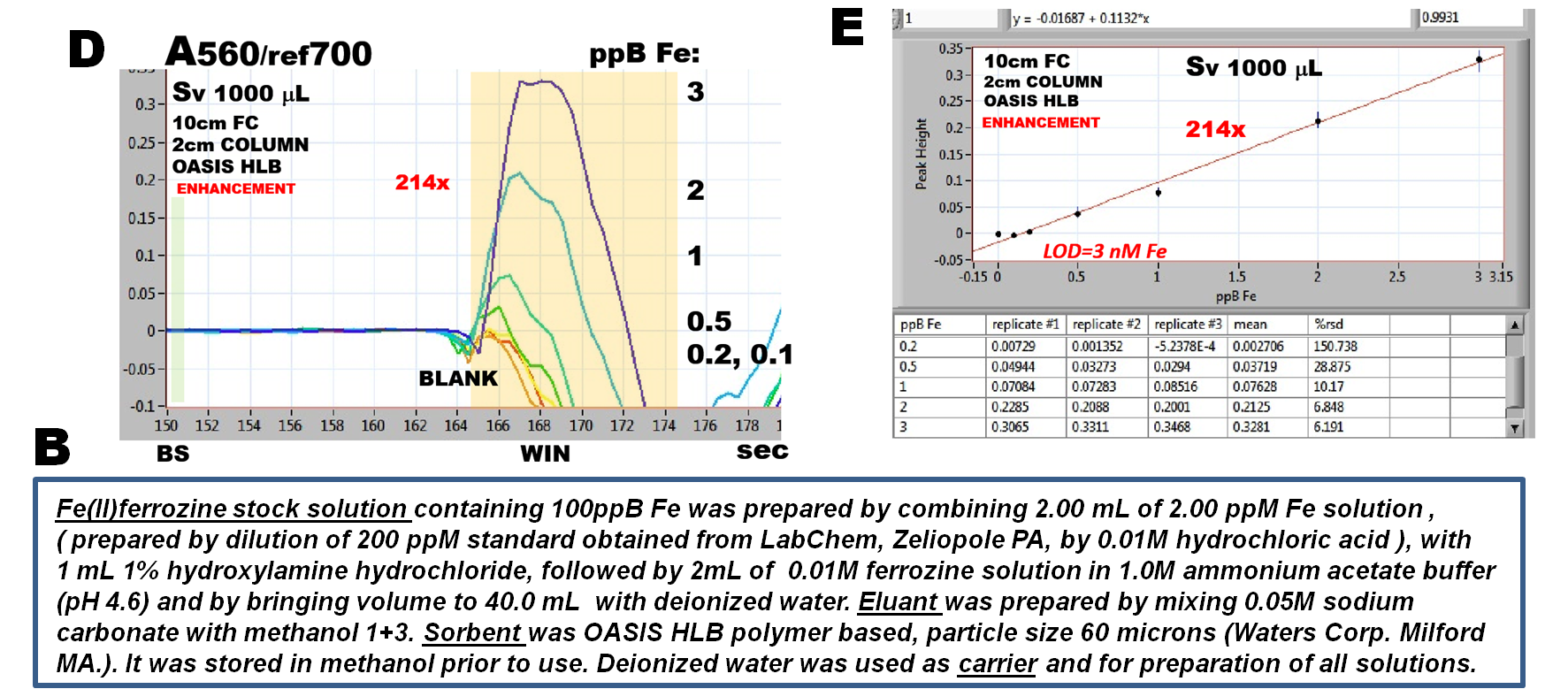Development of Trace Analysis of Iron by Sorbent Extraction
The instrument for programmable FI (miniSIA-2) was modified by mounting 1 cm long column (1.6mm I.D.), between lab-on-valve and external flow cell (A).
Fe(II)-ferrozine complex in ammonium acetate buffer was used to optimize its capture and elution from polymeric sorbent OASIS HLB by methanol –carbonate buffer (B).
The assay protocol (C) was designed to aspirate sample (Sv) in repetitive 1000mcrL steps, followed by on column perfusion at flowrate of 10mcrL/s. Lower flowrates did not increase yield of adsorption, however at 20mcrL/s the adsorption was 20% lower. Elution flowrate was selected to 4mcrL/s in order to provide sufficiently long time frame (WIN) for capturing peak height values, used to construct the calibration graph (D).
Fe(II)-ferrozine standards prepared by serial dilution (B) were analyzed by using assay protocol (C) set to one loading for Sv 1000 mcrL. The slope of the thus obtained calibration line (E) compared to the slope defined by molar extinction coefficient yield 214x enhancement of sensitivity compared to colorimetry using 1 cm long flow cell.
By using the protocol (C), albeit with increasing sample volumes Sv, led to linear increase of responses (see previous page A), and up to 1132x enhancement of sensitivity of assay.
1.3.14.B.











